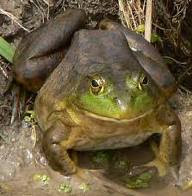
Ah, we return on the other side of a wonderful Christmas. Thanks to our “blizzard” I was granted an extra day with my girls and granddaughter. Another day of the sheer fun of making snowmen, watching movies, and eating pies and cookies and all the other delights. Now they are gone, and the sheets are in the laundry. The dried Play-dough waits scraping, but it can harden a few more hours, for the dog and I had our first bog walk in 10 days and now there are blog comments swirling about in my brain. No use trying to clean until they are emptied out.
First, our “blizzard” - not the 30” of NJ or even the foot and a half Boston got, but this magical snow that fell for the better part of two days, a veritable “White Christmas” backdrop. Due to the Cape’s warmer temps it kept itself to a modest, and easily dealt with 6”. But with the wild winds, it often looked like a hurricane in a snow globe- beautiful. And as my feeders were full, the suet was stocked and the water kept piping hot in the new birdbath my daughter gave me, we had a conga line of birds with bath towels and goggles waiting for a day at the Spa. All the hours cooking, doing dishes, etc. are far more entertaining when your view is of an avian world celebrating the holidays in fine style. Crows eating piecrusts, squirrels with peanuts, apple peelings, meant for the opossum, seemingly, by the tracks I saw, enjoyed by a coyote.
But back to the bog. When I wrote a few weeks ago, perhaps we were still discussing the hundreds of ducks and geese that were sporting about in the newly flooded bog. Now the bog is a frozen “lake” and the usual players are absent from the stage. No ducks, no geese. Cover that ice and all the bog with a few inches of snow and a whole new cast of characters makes itself apparent. Mice, shrews, the wanderings of crows, who spend far more time strutting about on the ground than you might think, all become clear.

Tracking, I love it! The world becomes an open book. And oh, to have gotten there when it first snowed, is to really see who lives where.
With vacation week upon us, I was looking at a more tromped upon landscape, but I am happy to see the tracks of sleds, the stomping of boots through the abandoned bogs on the forest side and snowballs still piled behind forts. Bravo for children and teens that still play outside- may their tribe increase! All this wonderful play meant that I had to look a little harder to find where the “wild things” were. However the dog walkers stick to the wide trail around the bog, and the kids stick to their forts in the abandoned bog. Consequently, I was able to return to “my trails” and find, voila, raccoons taking the same less obvious route through the woods and over the stream that I take.

And around the bog, off the wide trail, were signs of crows meandering, then taking off, and places where they had skidded in for a landing on ice- sliding footprints. When the snow is a little deeper and soft you can see the prints of their wingtips as they take off, and their tail feathers as they come in for a landing. I love that.
Dogs leave a meandering trail, gooning around is their main pursuit and they know their next meal is all but guaranteed. Not so lucky the wild canines, the fox and the coyote. Their next meal is never a given, so to conserve energy they walk in a straight line when covering ground. For that matter, their back foot, steps directly on their front track, so it looks like a two footed animal has gone this way rather than a four. The track I was following crossed the busy path of the dog walkers, but then continued alone out across a sparkling field of untouched snow.

I am looking in my tracking book as we speak, ”Mammal Tracks and Signs” by Mark Elbroch and the size was right for a fox rather than coyote. Yeah! I used to see fox here all the time, but when rabies hit years ago, it seemed to decimate my local foxes. How I do hope this is a sign of their return. Merry Christmas to me! Reynard may be back!
Just a mention of landscape alterations. The two large, but long dead, Pitch pines, where that crazed Blue Jay kept taunting the Coopers hawk in a blog back in the fall, both came down. When the migrating hawks pass through next spring they will have to find a perch a little deeper in the woods. And another Pitch pine that has amused me for having sprouts of needles coming out from under its trunk also bit the dust in this storm. A wonderful burrow is possible now in the soft sand under its roots. Branches do litter the ground everywhere for it WAS three days of wild winds. But we shall wait for another day to regale you with all the different types of seeds etc. you can find scattered over the snow after it snows.
Hoping then, that your Christmas was as wonderful and that you don’t want to throw things at the computer for the way YOU spent the “lovely” blizzard was trapped in your car, or in an airport or on a train. Oops, if so, sorry. And as we are “In the shadow of a New Year” I wish you all blessings and goodness to follow and the joy of enjoying nature together, even if only electronically. Happy New Year!
















































